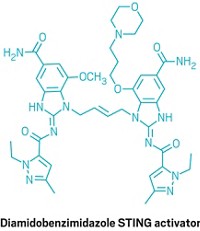Advertisement
Grab your lab coat. Let's get started
Welcome!
Welcome!
Create an account below to get 6 C&EN articles per month, receive newsletters and more - all free.
It seems this is your first time logging in online. Please enter the following information to continue.
As an ACS member you automatically get access to this site. All we need is few more details to create your reading experience.
Not you? Sign in with a different account.
Not you? Sign in with a different account.
ERROR 1
ERROR 1
ERROR 2
ERROR 2
ERROR 2
ERROR 2
ERROR 2
Password and Confirm password must match.
If you have an ACS member number, please enter it here so we can link this account to your membership. (optional)
ERROR 2
ACS values your privacy. By submitting your information, you are gaining access to C&EN and subscribing to our weekly newsletter. We use the information you provide to make your reading experience better, and we will never sell your data to third party members.
Neuroscience
Injections of botulinum conjugate relieves chronic pain in mice
Modified toxin targets and silences nerves that transmit pain, offering a potential nonaddictive alternative to opioids
by Tien Nguyen
July 25, 2018
| A version of this story appeared in
Volume 96, Issue 31

The Botox injections that smooth wrinkles rely on the ability of botulinum toxins from the bacterium Clostridium botulinum to block communication between cells. In the cosmetic treatment, these toxins stop nerve cells from telling muscles to contract. Now, scientists have modified the molecules to prevent nerves from sending pain signals.
Researchers led by University of Sheffield’s Bazbek Davletov and University College London’s Stephen P. Hunt report two botulinum conjugates that relieved chronic pain in mice for three weeks (Sci. Transl. Med. 2018, DOI: 10.1126/scitranslmed.aar7384). The conjugates, delivered by a single injection into the spine, showed no side effects in the animals and could be a promising, nonaddictive alternative to opioids for treating pain, Bazbek says.
The conjugates consist of two molecules stitched together with proteins. One end is a truncated botulinum toxin that silences pain-processing nerves by cleaving SNAP25, a protein that helps release neurotransmitters. The other end is a molecule that directs the conjugate to specific receptors on the nerve cells. This molecule is either substance P, which binds to neurokinin-1 receptors, or a peptide called dermorphin, which binds to mu opioid receptors.
Patrick W. Mantyh at the University of Arizona says the team’s conjugate design is “elegant and very clever.” Mantyh’s lab developed a similar conjugate for treating pain that used the protein saporin instead of botulinum as the payload. The saporin-based conjugate alleviated pain from bone cancer in dogs, but it also killed spinal neurons. The main advantage of the new conjugates, Mantyh says, is that botulinum inactivates neurons without killing them.
Eventually neurons degrade the botulinum molecules and SNAP25 proteins get replenished. But this process takes several months, Bazbek says, which means the conjugate could silence pain signals for four to five months after an injection. The team is working to produce their conjugate at clinical standards for human trials and is currently seeking partners to fund these investigations.




Join the conversation
Contact the reporter
Submit a Letter to the Editor for publication
Engage with us on Twitter